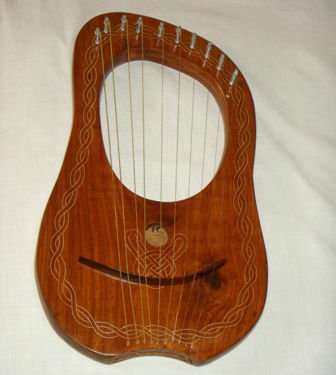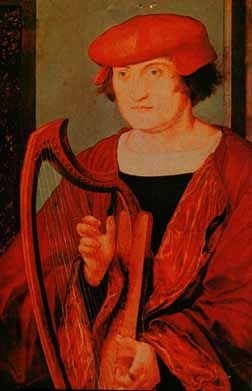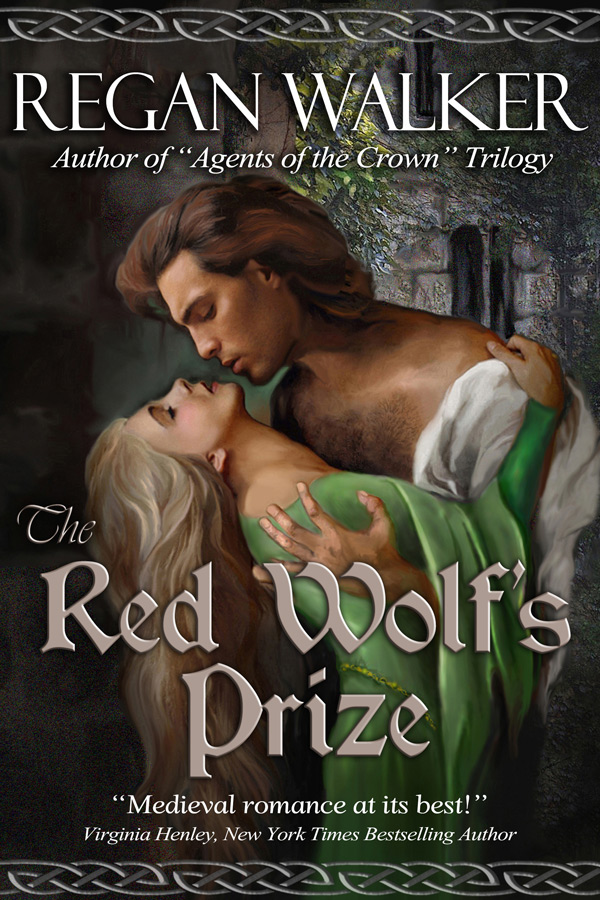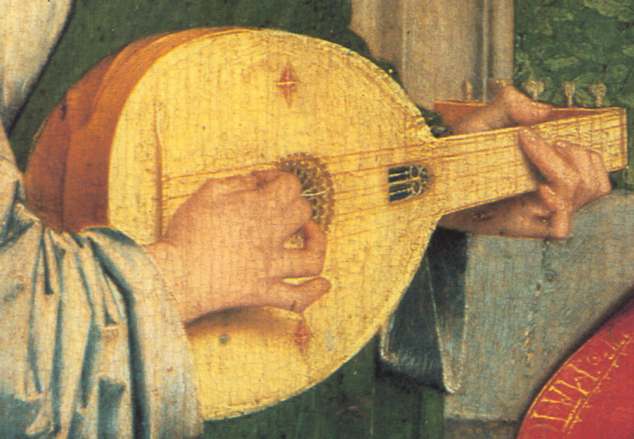 Today, please welcome my guest blogger, Regan Walker, as she discusses medieval music and musical instruments. Since I love music and I play the harp, I was especially interested in hearing about her take on the medieval predecessors to my favorite instrument. Take it away, Regan!
Today, please welcome my guest blogger, Regan Walker, as she discusses medieval music and musical instruments. Since I love music and I play the harp, I was especially interested in hearing about her take on the medieval predecessors to my favorite instrument. Take it away, Regan!
Regan Walker:
In my new medieval romance, The Red Wolf’s Prize, evenings at the manor at Talisand often featured music. Music was the chief form of entertainment of the people who lived during this time.
The oldest instrument, of course, was the human voice, and the oldest form of that was the plainchant, singing without instruments. It would be something like what we call A cappella today.
In my story, the Welsh bard, Rhodri, plays his small harp and the heroine, Lady Serena joins him in song, whether she is garbed as a servant in disguise or, later, as herself.
What kind of musical instruments did they enjoy?
Well, if you happened to have a traveling minstrel on hand, it might be crwth, the ancient Celtic lyre, predecessor to both the harp and violin. The Oxford Companion to Music defines a crwth as:
“An ancient plucked and bowed stringed instrument which had a more or less rectangular frame, the lower half of which was filled in as a sound-box, with flat (or occasionally vaulted) back, the upper half being left open on each side of the strings.”
This is the instrument David played while tending sheep, as recorded in the Bible. It was used by bards beginning in the 8th century BC, then later in Rome where it was the lyra, the first European bowed string instrument. The number of strings varied, the original Celtic version having seven strings.

Harps became common closer to the 10th century when we find evidence of a triangular-shaped harp. It is the small, hand-held harp that the Welsh bard Rhodri plays in The Red Wolf’s Prize.
Medieval harps in general were small and portable. Travelling musicians often had to carry their instruments on foot or horseback, and the materials required to build a quality instrument were expensive. The shape and string material of harps during this time largely depended on what part of the world they were from. Welsh harps were often strung with hair; Irish harps with wire; Scottish harps with gut.
 Medieval music used many string instruments such as the lute, mandore and gittern (small lute like instruments), psaltery (a cross between a harp and a lyre with twelve strings), pipes and bells. They also might have a dulcimer, similar in structure to the psaltery and zither and predecessor to the pianoforte. It was originally a plucked instrument.
Medieval music used many string instruments such as the lute, mandore and gittern (small lute like instruments), psaltery (a cross between a harp and a lyre with twelve strings), pipes and bells. They also might have a dulcimer, similar in structure to the psaltery and zither and predecessor to the pianoforte. It was originally a plucked instrument.
The lute remained almost unchanged from appearance, around the year 1000, up to the middle of 1500.
Lest I forget, there were percussion instruments, too—drums of all kinds, as well as the pipe and tabor (pictured below). The pipe was something like the recorder today, wooden and flute like. And there were cymbals and tambourines.
 Reading about medieval music is one thing. While we cannot know the precise sounds the medieval music conjured for the listener, we have their instruments so we can get close. It is a haunting sound that will definitely make you think of knights and their ladies.
Reading about medieval music is one thing. While we cannot know the precise sounds the medieval music conjured for the listener, we have their instruments so we can get close. It is a haunting sound that will definitely make you think of knights and their ladies.
To hear what medieval music might have sounded like, see this:
 The Red Wolf’s Prize
The Red Wolf’s Prize
SHE WOULD LOVE HIM AGAINST HER WILL
Serena wants nothing to do with the fierce warrior to whom she has been unwillingly given, the knight who may have killed her father. When she learns the Red Wolf is coming to claim her, she dyes her flaxen hair brown and flees, disguised as a servant, determined to one day regain her lands. But her escape goes awry and she is brought back to live among her people, though not unnoticed by the new Norman lord.
To win a free copy of The Red Wolf’s Prize, enter here:
Disclaimer: Although I know Regan to be a careful researcher and talented author, I have not read this book.


Thanks, Donna, for having me and the Red Wolf on your blog to talk about the music he and Serena love!
Thank you so much for being my guest blogger, Regan. I loved learning about the old musical instruments! Your book sounds great and I wish you much success with it.
How fascinating! I am especially interested because some of these instruments are still around, such as the psaltry and dulcimer. We have a hammered dulcimer, a direct descendant of the dulcimer mentioned in the blog, and I play the mountain dulcimer, which looks like a direct descendant of the crwth and is the only musical instrument developed in the United States.
Hi, Emily. Thanks for stopping by. How wonderful you play the dulcimer!
I love the settings, especially Medieval ones. Stone castles with drafts and tapestries, spiral staircases, parapets from which you can see rolling fields and high mountains. Sigh.
Me, too, Lexi 🙂
Lexi, I, too, love medieval settings. I hope you like the one for Red Wolf…a Saxon manor and the wooden castle that William orders built.
So nice to read this interesting post, Regan! Love the history on the medieval muscial instruments…and especially loved the video with a sample of medieval music to listen to. Hauntingly beautiful music despite being so ancient.
Forgot to mention that I did not do the rafflecopter thingee because I already have Regan’s books and I would like to give the chance to win to a new reader.
So glad you liked my post on medieval music. I find the subject fascinating. And it is very kind of you to forgo any prize for another. I’m so glad I can count you among those readers who love my stories, Janice!
This sounds like a great book! I love medieval romances, too. I’d heard of a psaltery but I didn’t know what it was. I’ll have a better visual picture in my mind the next time I read about these instruments. Thanks for the great post!
You are most welcome, Anne. I hope you like the story. Do let me know!
Fun post! You introduced me to a few new instruments I didn’t know about. Your book sounds great!
Thanks, Leigh. I do hope you enjoy The Red Wolf’s Prize!
I really like the settings (castles and such) it just gives a different feel to a story that I really like.
Jerika, I, too, love medieval settings and expect to be writing more of them…the next two in the Medieval Warriors series are already kicking around in my head and then I’ve an idea for a trilogy set in the 12th century on the Isle of Skye.